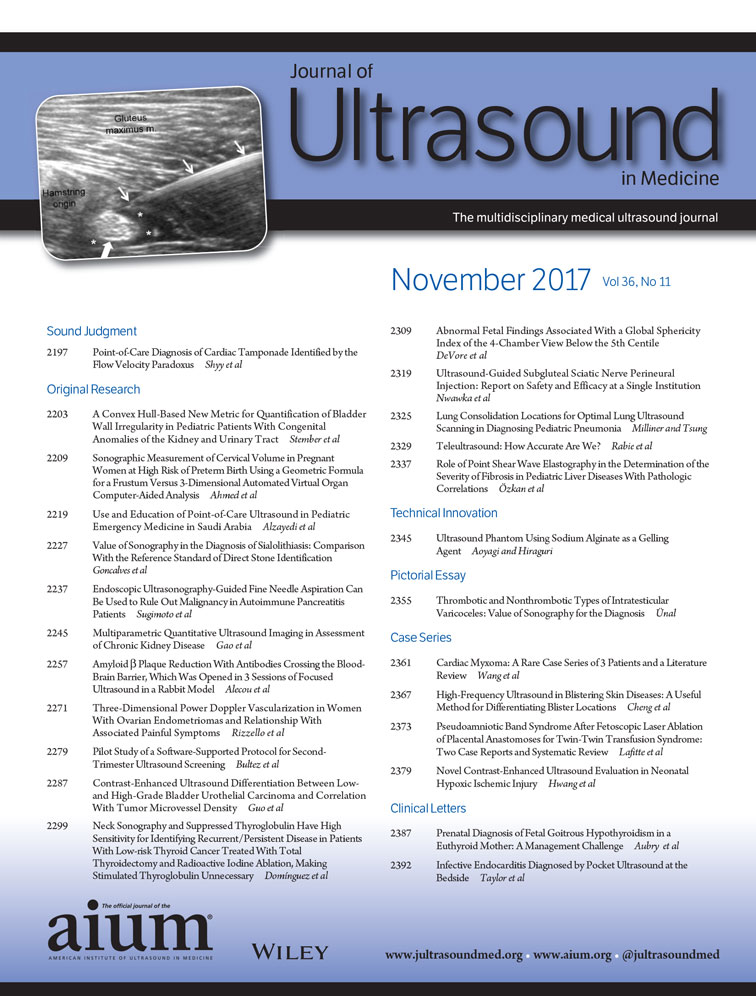Three-Dimensional Power Doppler Vascularization in Women With Ovarian Endometriomas and Relationship With Associated Painful Symptoms
Abstract
Objectives
The objective of the study was to evaluate the correlation between endometrioma-associated pain and lesion vascularization as measured with 3-dimensional power Doppler transvaginal sonography.
Methods
Endometriomas were examined, and 4 indices were obtained: mean grayness, flow index, vascularization index, and vascularization-flow index. Dysmenorrhea, chronic pelvic pain, and dyspareunia were analyzed in terms of severity, presence/absence, and duration.
Results
Twenty-nine women were selected. The univariable association of painful symptoms in terms of presence/absence and duration was low with the exception of mean grayness with the presence of chronic pelvic pain (β = –0.106; P = .047; 95% confidence interval, 0.810 to 0.998). The R2 value increased to 0.226 for dysmenorrhea (β = –0.475; P = .029) when analyzing the association between the vascularization index and the severity of painful symptoms. The visual analog scale scores for chronic pelvic pain and dyspareunia were higher (R2 = 0.300; β = –0.547 and –0.548, respectively; P = .028 and .053).
Conclusions
We observed an inverse association between the severity of pain and endometrioma vascularization. Further larger studies are required to confirm our findings.




